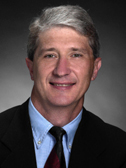Steven Ghivizzani, Ph.D.
Professor of Orthopaedics and Rehabilitation & Molecular Genetics and Microbiology
College of Medicine
2011 Awardee
 Steven C. Ghivizzani’s work focuses on the development of gene-based treatments for musculoskeletal disorders.
Steven C. Ghivizzani’s work focuses on the development of gene-based treatments for musculoskeletal disorders. He has been working to adapt gene transfer technologies as drug delivery systems to achieve prolonged, localized production of proteins with therapeutic and/or regenerative properties at sites of disease or injury.
Research for arthritis gene therapy has progressed the furthest, following two complementary paths. The first has involved the characterization of candidate anti-arthritic genes for their capacity to inhibit disease when delivered and over-expressed in the joints of animals with experimental arthritis. The second has been more mechanistic, as Ghivizzani has worked to develop an understanding of the biology of local gene transfer to joint tissues, to identify the cell populations and gene delivery approaches that together enable prolonged expression of therapeutic transgenes intra-articularly.
Ghivizzani has been working to develop a novel therapy for achondroplasia (dwarfism) using soluble receptors for fibroblast growth factor receptor 3 (FGFR3). Over 98% of the people with achondroplasia have the identical mutation in the gene for FGFR3, which normally serves as a negative regulator of proliferation and maturation of growth plate chondrocytes. This mutation causes FGFR3 to be hyperactive, leading to over-repression of endochondral bone growth and, in turn, shortened stature. By delivering systemically, soluble forms of FGFR3 that titrate circulating FGFR3 ligands, Ghivizzani has been able to reduce aberrant FGFR3 signaling to rescue bone growth in neonatal dwarf mice, which bear the orthologous FRGR3 mutation.
Ghivizzani has been working to explore the nature of intra-tumoral heterogeneity in osteosarcoma. Using the promoter for human Oct4 linked to a GFP reporter, he has been able to selectively identify, characterize, and clone highly virulent, tumor-initiating cells in this form of cancer. Differential analysis of the global expression patterns of the tumorigenic and non-tumorigenic cells within individual osteosarcomas points to the specific molecular mechanisms responsible for the disparate activities of these cells.

